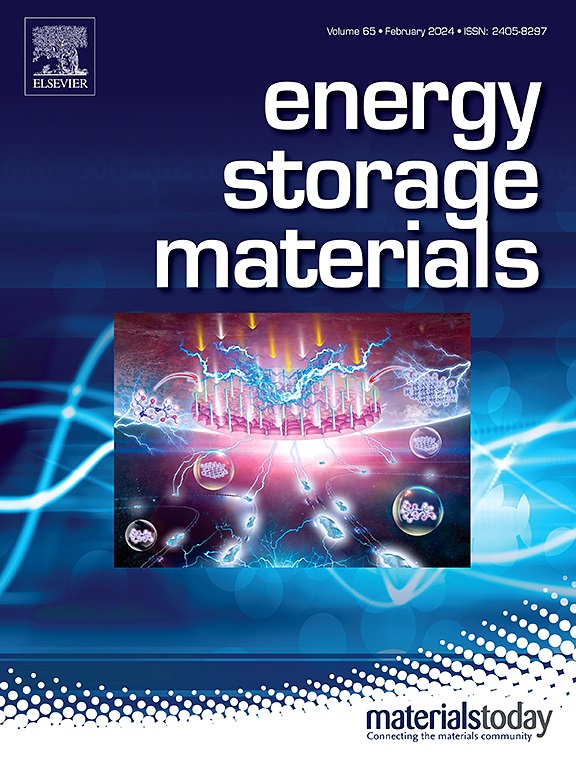Interfacial dual-modulation through deoxygenation effect and tuning hydrogen-bonding environment toward highly reversible Zn metal anodes
IF 18.9
1区 材料科学
Q1 CHEMISTRY, PHYSICAL
引用次数: 0
Abstract
In aqueous zinc-ion batteries (AZIBs), the Zn anode is consistently plagued by severe corrosion reactions and dendrite growth issues, leading to rapid degradation in performance. Herein, these challenges are addressed by carbohydrazide (CBZ) additive via tuning hydrogen-bonding environment and chemical deoxygenation effect. The polar functional groups (-C=O and -NH/-NH2) of CBZ preferentially anchor to the Zn anode and form stronger H-bonds with water molecules, which can alter Zn2+ migration pathways and restrain parasitic reactions associated with water molecules. Moreover, due to the unique deoxygenation effect, CBZ can react chemically with dissolved oxygen (DO) in aqueous electrolyte, thereby preventing DO from corroding the zinc metal anode and effectively suppressing surface passivation with hydrogen evolution reactions (HER). Consequently, the Zn//Zn symmetric cell with CBZ-modified electrolyte confers an extended lifespan of up to 2800 h at 5 mA cm-2. Furthermore, the Zn//NVO pouch cell with ∼1.2 Ah capacity demonstrates excellent cycling stability.

通过脱氧效应和调节氢键环境对高可逆锌金属阳极进行界面双调制
在含水锌离子电池(azib)中,锌阳极一直受到严重腐蚀反应和枝晶生长问题的困扰,导致性能迅速下降。在此,碳酰肼(CBZ)添加剂通过调整氢键环境和化学脱氧效应来解决这些挑战。CBZ的极性官能团(-C=O和-NH/-NH2)优先锚定在Zn阳极上,并与水分子形成更强的氢键,从而改变Zn2+的迁移途径,抑制与水分子相关的寄生反应。此外,由于其独特的脱氧作用,CBZ可以与水溶液电解质中的溶解氧(DO)发生化学反应,从而防止DO对锌金属阳极的腐蚀,并有效抑制析氢反应(HER)的表面钝化。因此,具有cbz修饰电解质的Zn//Zn对称电池在5 mA cm-2下的使用寿命可延长至2800小时。此外,具有~ 1.2 Ah容量的Zn//NVO袋状电池表现出优异的循环稳定性。
本文章由计算机程序翻译,如有差异,请以英文原文为准。
求助全文
约1分钟内获得全文
求助全文
来源期刊

Energy Storage Materials
Materials Science-General Materials Science
CiteScore
33.00
自引率
5.90%
发文量
652
审稿时长
27 days
期刊介绍:
Energy Storage Materials is a global interdisciplinary journal dedicated to sharing scientific and technological advancements in materials and devices for advanced energy storage and related energy conversion, such as in metal-O2 batteries. The journal features comprehensive research articles, including full papers and short communications, as well as authoritative feature articles and reviews by leading experts in the field.
Energy Storage Materials covers a wide range of topics, including the synthesis, fabrication, structure, properties, performance, and technological applications of energy storage materials. Additionally, the journal explores strategies, policies, and developments in the field of energy storage materials and devices for sustainable energy.
Published papers are selected based on their scientific and technological significance, their ability to provide valuable new knowledge, and their relevance to the international research community.
 求助内容:
求助内容: 应助结果提醒方式:
应助结果提醒方式:


